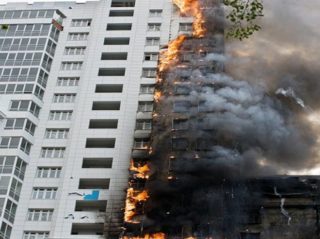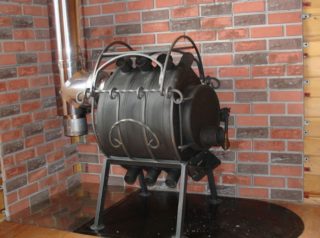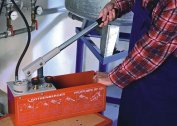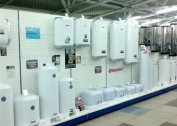Expanded polystyrene is a popular insulating material used for insulation of internal and external surfaces of residential, technical, industrial buildings. However, reviews about him are not always positive. You should understand what harm polystyrene foam is possible for a person, and whether it is worth using it to warm the home.
Styrene in polystyrene
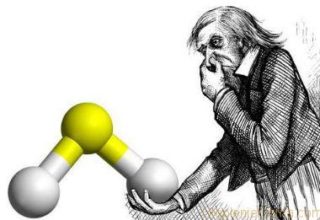
The foam contains flame retardants (increase the resistance of the material to fire), plasticizers (with their help the product becomes monolithic, resistant to deformation). Fillers give expanded polystyrene the necessary level of elasticity, resistance to moisture. Their quantity and composition depends on the purpose of the material. The extruded variety of the product has more positive qualities than other types.
The main substance in the composition of the foam is styrene. It is he who is considered dangerous to health. The maximum concentration of this component in the product is 0.05%. However, manufacturers do not always comply with this norm and significantly exceed it.
Styrene is a toxic substance used in the manufacture of polymers. With a direct effect on the human body, it causes blood diseases, impaired functionality of the central and autonomic nervous system. But for such consequences, a high concentration of the substance is required, although it can accumulate in the body, into which it penetrates by inhalation.
Negative polystyrene characteristics

The damage to polystyrene foam for health is obvious, but with proper use of the material, it is minimized. This insulation has other negative characteristics.
Low vapor permeability
The ability to pass steam for insulating materials is an important quality, but polystyrene sheets practically do not have it. Zero vapor permeability of the extruded material. It has a dense structure and smooth surface. This leads to poor air exchange, the appearance of mold and fungus on the walls. In this case, the risk of developing pathologies of the respiratory system, migraines, indigestion or dysfunction of the internal organs increases.
Polyfoam, although slowly but absorbs moisture, so it is better not to use it for warming damp rooms. When immersed in water, the leaf will absorb it up to 4%. Over time, unprotected material begins to lose its properties.
High flammability
Despite the fact that flame retardants are present in the material, the risk of ignition is high. After sunbathing, the foam practically does not fade, therefore, it contributes to the further spread of fire. In terms of combustibility, this product is considered the most dangerous and has the category G3-G4.
The harm of polystyrene to humans is also that when burned, it is capable of releasing toxic substances. In this case, the flame is difficult to localize. In addition, the product melts, so you can not be near it in a dangerous situation. Hot drops of polystyrene, falling on other products, contribute to the spread of fire. For this reason, the material is rarely used in the manufacture of ventilated facades. However, when used under a concrete screed, the risk of ignition is reduced.
Other disadvantages of expanded polystyrene
The specified material is not always chemically inert. It deteriorates under the influence of turpentine with acetone, some paints and varnishes, drying oils. These substances dissolve polystyrene foam. The product quickly loses its properties under the influence of direct sunlight: it becomes less elastic and durable. Other disadvantages are:
- inability to protect the structure from external noise, as well as air waves;
- susceptibility to damage by rodents.
Expanded polystyrene is able to break under the influence of mechanical stress.
The impact of polystyrene on the ecology and human health
With proper installation, as well as with reliable protection from the influence of external negative factors, the molecular structure of the material does not change. Under normal conditions, the health hazard of expanded polystyrene is minimal.
Material is safe when used in temperatures ranging from -40 to +40 degrees. If it is flammable, a person experiences such health problems:
- irritation of the mucous membranes of the eyes, respiratory tract;
- dizziness and coughing;
- fatal lung damage with a high concentration of styrene;
- development of oncological pathologies;
- impaired functionality of the liver and kidneys, nervous system.
To reduce the health risks of expanded polystyrene, do not use it to insulate the roof. If the roof is metal, it is very hot under the influence of sunlight. In this case, there is a risk of release of styrene in the surrounding area.
If you use the product in a room with high humidity, after some time a fungus will start in the walls. It destroys the base and negatively affects human health. The first to react is a small child.
When choosing expanded polystyrene, environmental friendliness is the second issue discussed for several years. Many experts say that this material is harmful to the environment. The main danger lies in the following product properties:
- Weak absorption of moisture. Since the disposal of the used material is not always carried out according to the rules, a huge number of floating plastic “islands” can be found in the oceans.
- Lack of oxidation. As a result of this, the processes of decay are practically absent in the insulation. Studies have shown that with proper use of the product, it does not lend itself to degradation for at least 60 years. For ecology, this is of great importance, since the material accumulates in landfills, littering the environment.
- Resistant to most solvents. In the landfill, this material can lie for decades. Resistance to biological degradation leads to the fact that garbage fields grow polluting the earth.
Collecting and recycling material is an expensive and difficult procedure. The cost of producing polystyrene from the insulation is high. Cheaper to get it from primary raw materials. It is possible to reduce the negative impact of a product on nature if it is put into the production of building blocks.
Rules for the safe use of polystyrene
When using expanded polystyrene, the health hazard in an apartment can be reduced or eliminated altogether if the conditions for its installation and use are observed:
- it is forbidden to use material for insulation of internal surfaces, especially in rooms with a high level of humidity;
- do not use it when insulating metal or other types of roofs (it is possible when organizing ventilation);
- Mounting the material is allowed in places where there are no open sources of fire or the risk of ignition of the product is completely absent;
- Do not use damaged sheets.
Despite the fact that polystyrene foam is subject to ignition and is capable of releasing toxic substances into the environment, it continues to be a demanded material that retains heat in rooms. It can be used to isolate not only residential premises, but also industrial buildings, offices.
The main rule of safe operation of the material is protection against the influence of external negative factors: wind, water, direct sunlight, some solvents. In this case, it will serve for a long time and will not cause harm.
